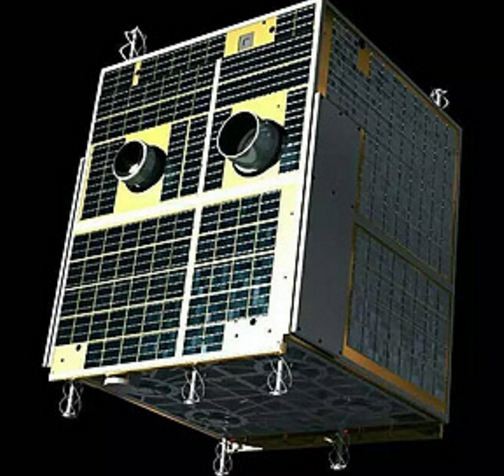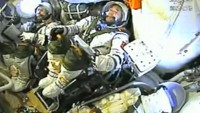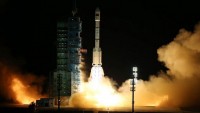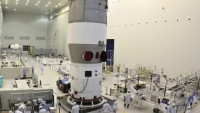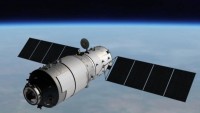Tiangong-2 launches Banxing-2 Microsatellite, its Official Photographer
| Arthur Dominic Villasanta | | Oct 24, 2016 05:11 AM EDT |
(Photo : Shanghai Academy of Spaceflight Technology) Banxing-2.
Day five for the two Chinese astronauts aboard the Tiangong-2 space lab was highlighted by the launch of the Banxing-2 microsatellite to be used for photpgraphy and technology demonstrations.
Banxing-2 (the word means Companion Satellite) is a small technology microsatellite that will capture images of Tiangong-2 in orbit and also monitor orbital debris. Its predecessor, Banxing-1, accomplished the same mission for Shenzhou 7 in September 2008. It weighs 47 kilograms and is the about the size of a desktop printer.
Like Us on Facebook
By the end of this month, Banxing-2 will orbit closer to Tiangong-2 and Shenzhou-11 and take photos of both machines with its 25 megapixel high-resolution full-frame visible light camera. It also carries fisheye cameras.
Apart from being Tiangong-2's official photographer, Banxing-2 will conduct efficient orbit control; process tasks autonomously and transmit data at high speeds, said Chinese media.
Chinese astronauts Jing Haipeng and Chen Dong are now on their fifth day aboard Tiangong-2. They've already carried out a number of science experiments during their short time in space. The two men will live inside Tiangong-2 for an entire month.
Yesterday, the men conducted experiments in China's space lab and sending data back down to earth. The two men regularly check their emails using a computer that they brought into outer space. They keep in touch with the deputy director of China's Manned Space Office and China's first astronaut, Yang Liwei.
"The work on the lab is going exactly as planned. From the data we have received, life up there -- including water intake, food consumption and the health condition -- is all good," said Yang.
Yang said it isn't easy working in space. It takes more time to conduct some experiments than on earth. The two astronauts work in collaboration with their mission control. They rest one day a week.
"We are giving more freedom to the astronauts. We give them their work, and they decide how to complete the tasks over an 8-hour work day," said Yang.
TagsBanxing-2, microsatellite, Tiangong-2, Jing Haipeng, Chen Dong, Shenzhou-7
©2015 Chinatopix All rights reserved. Do not reproduce without permission
EDITOR'S PICKS
-

Did the Trump administration just announce plans for a trade war with ‘hostile’ China and Russia?
-

US Senate passes Taiwan travel bill slammed by China
-

As Yan Sihong’s family grieves, here are other Chinese students who went missing abroad. Some have never been found
-

Beijing blasts Western critics who ‘smear China’ with the term sharp power
-

China Envoy Seeks to Defuse Tensions With U.S. as a Trade War Brews
-

Singapore's Deputy PM Provides Bitcoin Vote of Confidence Amid China's Blanket Bans
-

China warns investors over risks in overseas virtual currency trading
-

Chinese government most trustworthy: survey
-

Kashima Antlers On Course For Back-To-Back Titles
MOST POPULAR
LATEST NEWS
Zhou Yongkang: China's Former Security Chief Sentenced to Life in Prison

China's former Chief of the Ministry of Public Security, Zhou Yongkang, has been given a life sentence after he was found guilty of abusing his office, bribery and deliberately ... Full Article
TRENDING STORY

China Pork Prices Expected to Stabilize As The Supplies Recover

Elephone P9000 Smartphone is now on Sale on Amazon India

There's a Big Chance Cliffhangers Won't Still Be Resolved When Grey's Anatomy Season 13 Returns

Supreme Court Ruled on Samsung vs Apple Dispute for Patent Infringement

Microsoft Surface Pro 5 Rumors and Release Date: What is the Latest?
